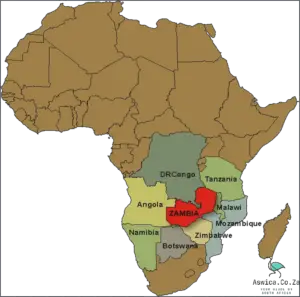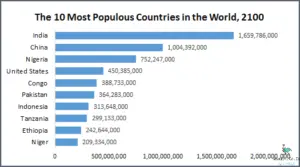
Where Do People Live In South Africa
The population of South Africa is divided into four major racial groups: black, white, Indian, and Coloured. The majority of the population is black, followed by white, Indian, and Coloured. The population is also divided into two main language groups: English and Afrikaans. English is the language of the majority, followed by Afrikaans.
The majority of the population lives in the urban areas of the country, with the largest city being Johannesburg. Other major cities include Cape Town, Durban, and Pretoria. The population of the rural areas is relatively small, but there are some large towns and villages.
The majority of the black population lives in the rural areas, while the majority of the white population lives in the urban areas. The Indian and Coloured populations are evenly divided between the urban and rural areas.
Contents
Where Do People Live In South Africa
South Africa is an incredibly diverse country with many different people living together. The majority of South Africans live in urban areas, mostly in cities like Johannesburg, Cape Town, Durban, and Pretoria. Many people also live in smaller towns and rural areas, particularly in the northern and eastern parts of the country. In the western parts of South Africa, people live in more affluent suburbs. South Africa is also home to many different ethnic groups, each with their own distinct language, culture, and traditions. This has resulted in a great deal of cultural diversity and a range of different living environments across the country.
Overview of South Africa’s Geography:
South Africa is a country that is rich with diversity, both in its people and its geography. From the rugged mountains of the Western Cape to the rolling grasslands of the Eastern Cape, South Africa offers a variety of landscapes and climates. This overview of South Africa’s geography is designed to give you an overview of the country’s physical features, climate, and population distribution.
The total land area of South Africa is 1,219,912 square kilometers. This makes it the 25th largest country in the world. The country has a diverse range of topography, from the flat coastal plain in the east to the mountainous interior in the west. The highest point in the country is Mafadi Peak at 3,450 meters, located in the Drakensberg Mountains on the eastern border.

The climate of South Africa varies depending on the region. The western part of the country is mostly arid and semi-arid, while the eastern coast is home to a subtropical climate. The average annual temperature ranges from a low of 8 degrees Celsius in the mountain areas to a high of 28 degrees Celsius in the eastern coastal regions.
The population of South Africa is estimated to be over 58 million people, with the majority living in the urban areas. The population is highly concentrated in the major cities, such as Johannesburg, Cape Town, and Durban. The rural areas are sparsely populated, particularly in the more remote areas of the country.
Where people live in South Africa is largely determined by the geography and climate of the region. The western portion of the country is largely rural, with the majority of the population living in small towns and villages. The eastern coast is home to the majority of the population and is home to the major cities. The interior of the country is sparsely populated, with most people living in small agricultural towns.
No matter where you go in South Africa, you will find a variety of cultures and languages. This is due to the country’s long history of immigration and colonization. The official language is English, but many people also speak Afrikaans, Zulu, and other languages.
South Africa’s geography and climate have played a major role in shaping the country’s culture and population distribution. From the rugged mountains of the Western Cape to the subtropical climate of the Eastern Cape, the country offers a variety of landscapes and climates. No matter where you go in South Africa, you will find a unique blend of cultures and languages.
Types of Housing in South Africa:
South Africa is a country with a rich and diverse range of housing and living options. From sprawling urban cities to rural villages, the country has a variety of housing options for its citizens. In this blog post, we’ll take a look at the different types of housing found in South Africa.
One of the most prominent forms of housing in South Africa is apartment living. Apartment buildings are common in both large cities and towns, providing people with access to affordable rental accommodation. Apartments usually come with communal areas, such as a gym, swimming pool, and other shared amenities. In many cases, there are also security guards that patrol the building, providing additional peace of mind.
For those seeking a more permanent residence, there are also a range of townhouses, villas, and other housing options. Townhouses are typically two-story homes that share walls with other townhouses. Villas are typically larger dwellings that are situated on their own private property. These types of housing are generally more expensive than apartments, but they offer more space and privacy.
For those looking for a more rural living experience, there are also a range of farms, smallholdings, and other rural housing options. Farms are typically larger properties that are used for agricultural purposes, such as growing crops or raising livestock. Smallholdings are usually smaller properties that are used for a variety of different purposes, including raising animals, growing crops, and other activities.

Finally, there are also a number of different types of holiday homes available in South Africa. Holiday homes are ideal for those looking for a short-term residence, or for people who simply want to get away from it all. Holiday homes can range from quaint cottages to luxurious villas, depending on your requirements.
Overall, South Africa is a country with a wide range of housing options. Whether you’re looking for a permanent residence or just a place to escape, there’s something to suit everyone’s needs. With its diverse range of housing options, South Africa is sure to have something to suit every budget and lifestyle.
Distribution of Population in South Africa:
The population distribution in South Africa is a fascinating topic of study, with a wide range of cities, towns, and rural areas that showcase the diversity of the nation. In 2018, the population of South Africa was estimated to be approximately 57 million people, with the majority living in urban areas. Yet, despite this urbanization, there are still many rural areas where the majority of the population resides.
The most populous city in South Africa is Johannesburg, with a population of over 3 million people. It is the economic hub of the country and is an important center for finance, industry, and culture. Other major cities include Cape Town, Durban, and Pretoria, which are all important centers of finance, industry, and culture.
The population of the rural areas of South Africa is much less dense, with most people living in small villages and towns. The majority of these rural areas are in the eastern and northern parts of the country, where the land is more arid and less suited for large-scale farming. These rural areas are home to many small-scale farmers, as well as some larger commercial farms.
In addition to the population living in cities and rural areas, there is a significant number of people living in informal settlements. These informal settlements are often located on the outskirts of major cities, and many of these communities lack access to basic amenities like running water and electricity.
The population of South Africa is a diverse and complex mix of people from different backgrounds and cultures. It is a country with a wide range of languages, religions, and ethnicities, making for a vibrant and fascinating nation. Despite its diversity, the population of South Africa is mostly united by a shared language and culture.
Overall, the population distribution in South Africa is an interesting and complex topic. The country is home to a mix of urban and rural areas, as well as informal settlements, making for a unique mix of cultures and lifestyles. Understanding the demographics and population distribution in South Africa is important in order to better understand the nation and its people.
Conclusion
The majority of people in South Africa live in rural areas. However, there are also many people who live in urban areas. The largest city in South Africa is Johannesburg. Other major cities include Cape Town, Durban, and Pretoria.




